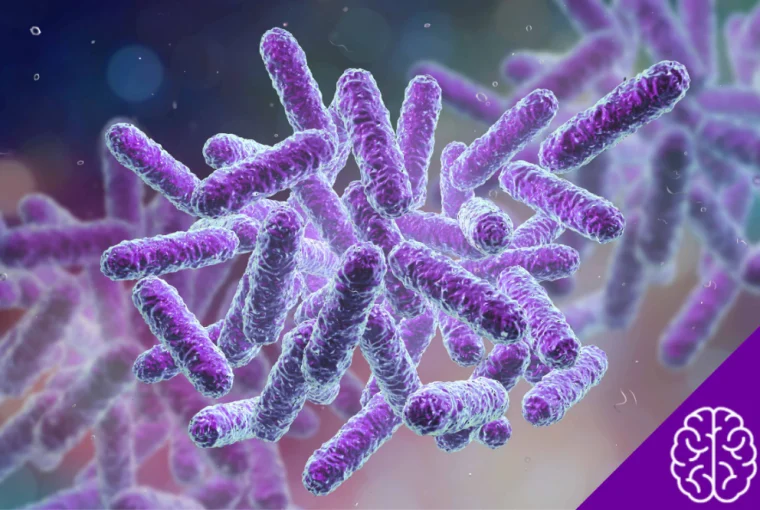It’s one of biology’s great chicken-or-egg questions: Which came first, viruses or bacteria? These microscopic entities have been on Earth for billions of years, long before humans arrived.
While they share an ancient history, the story of their origins is a complex puzzle that scientists are still piecing together. This article will explore the leading theories about whether viruses or bacteria were the first to appear and explain why finding a definitive answer is so challenging.
Humans have been around for about 2.5 million years, but viruses and bacteria are far older. Scientists estimate that these biological entities first appeared on Earth more than 4 billion years ago. They likely emerged from a “primordial soup” of organic molecules that were precursors to RNA and DNA.
Biologist Karthik Anantharaman from the University of Wisconsin-Madison explains that these carbon-containing molecules combined and organized themselves in a sequence of biological reactions, leading to the first simple life forms, or microbes.
Untangling the evolutionary timeline from this point is difficult. Both viruses and bacteria have changed significantly over billions of years, and the fossil record offers limited clues. Understanding the fundamental differences between them, however, provides a starting point for exploring their origins.
What’s the difference between viruses and bacteria?
While both can cause disease, viruses and bacteria are fundamentally different. Bacteria are single-celled organisms that can survive and reproduce on their own. They have all the necessary cellular machinery to live independently.
The oldest known fossils of bacteria date back about 3.5 billion years, giving us a solid anchor point in their history.
Viruses, on the other hand, are much simpler. They are essentially genetic material (DNA or RNA) enclosed in a protein coat.
Crucially, viruses are not considered living organisms because they lack a metabolism and cannot replicate by themselves.
To reproduce, they must infect a host cell and hijack its resources. This dependency on a host is a key argument for the “bacteria-first” theory. If viruses need host cells to exist, it seems logical that cellular life, like bacteria, must have come first.
The fossil problem further complicates things. While we have bacterial fossils, viruses don’t leave them behind because they degrade much more easily.
This lack of a physical record makes it incredibly difficult to trace their ancient history. Additionally, viruses have a remarkable ability to change their genetic sequence, meaning they evolve very rapidly.
The Case for Co-evolution
For a long time, the prevailing theory was that viruses evolved from bacteria. This idea suggested that viruses were once more complex organisms that gradually shed their biological functions, becoming dependent on host cells. However, more recent discoveries have challenged this hypothesis.
A major breakthrough came in 2003, when French researchers discovered a “giant virus” in a water tower in Bradford, England. This virus was so large that it was initially misidentified as a bacterium.
According to Gustavo Caetano-Anolles, a researcher at the Carle Illinois College of Medicine, these giant viruses possess some of the machinery needed to make proteins, a function typically reserved for cellular organisms.
This discovery led to a new hypothesis: perhaps ancient cells “reduced” themselves over time, evolving into the streamlined, dependent viruses we see today. However, this theory has also been largely refuted.
The most widely accepted theory now is one of co-evolution. This suggests that both viruses and bacteria descended from a single, common ancestor.
According to Caetano-Anolles, it’s possible that viruses have been an integral part of cellular processes from the very beginning. “We have incorporated viral material into our constitution since the beginning,” he explains. “Perhaps the virus is really part of the whole process of the cell and should be thought of as an integrated element.”
What’s the final verdict?
The question of whether viruses or bacteria came first remains one of science’s great unsolved mysteries. While the co-evolution theory is currently the most plausible explanation, the immense time scale makes it nearly impossible to prove.
“We are trying to infer an event that happened 4 billion years ago,” concludes Karthik Anantharaman. “We can do experiments to support one hypothesis or another, but in reality, it is a chicken-and-egg situation.”
For now, the story of life’s origins continues to unfold. As scientists develop new tools and techniques to study ancient genetic material, we may one day uncover more definitive answers.
Until then, the shared history of viruses and bacteria remains a fascinating testament to the complexity and resilience of life on Earth!


